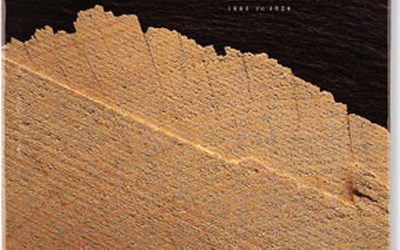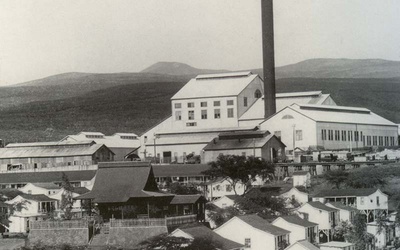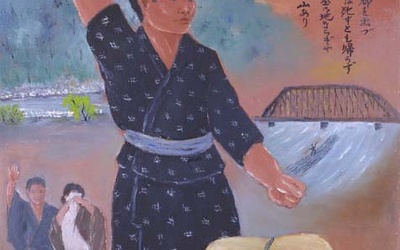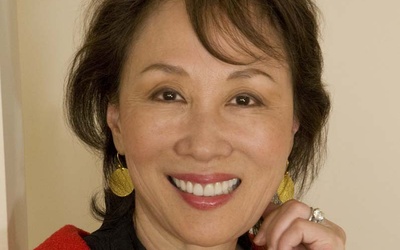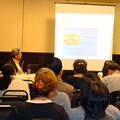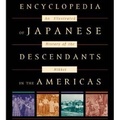
Akemi Kikumura Yano
Dra Akemi Kikumura-Yano, CEO del Museo Nacional Japonés Americano y responsable del Proyecto del Legado Nikkei (Nikkei Legacy Project) que produce el sitio de internet Discover Nikkei. Posee un doctorado en antropología de la Universidad de California en Los Angeles y es autora del libro, Through Harsh Winters: The Life of a Japanese Immigrant Woman .
Última actualización febrero de 2008
Historias de Este Autor
Issei Pioneers - Hawaii and the Mainland 1885-1924 - Part 5
31 de enero de 2011 • Akemi Kikumura Yano
Read Part 4 >>THE GREAT JAPANESE STRIKE OF 1909In 1900, Japanese laborers were involved in 20 of the 22 significant strikes recorded by the United States Labor Commissioner. Four years later, the workers demonstrated greater organization and solidarity when approximately 1,600 Japanese struck Oahu Sugar Company in Waipahu. However, the Great Japanese Strike of 1909 stood apart from the rest in the scope, duration, and organization. The strike lasted four months, involving five major plantations in Oahu, 7,000 workers, and …
Issei Pioneers - Hawaii and the Mainland 1885-1924 - Part 4
24 de enero de 2011 • Akemi Kikumura Yano
Read Part 3 >>“OI OKINAWA”On most plantations, different nationalities were housed in separate camps Although they adopted one another’s food, clothing, and speech, the various ethnic groups did not socialize with one another. Even within the same ethnic group, a separation of sorts existed based on regional and prefectural differences. Among the Japanese the greatest distinction existed between the Naichi, people from the main islands of Japan, and the Uchinanchu, people of Okinawa. The Okinawans were treated as outcasts and …
Issei Pioneers - Hawaii and the Mainland 1885-1924 - Part 3
17 de enero de 2011 • Akemi Kikumura Yano
Read Part 2 >>PLANTATION LIFE AND LABORAs the last ethnic group to be recruited in the nineteenth century, the Japanese entered at the very bottom of the plantation system. In 1892, they constituted more than 65 percent of the workforce but received the lowest wages and were given the poorest housing. Skilled and supervisory positions were almost exclusively reserved for whites.1 “The gap between plantation managers and immigrant workers was wider than that existed between the lord and peasant during …
Issei Pioneers - Hawaii and the Mainland 1885-1924 - Part 2
10 de enero de 2011 • Akemi Kikumura Yano
Read Part 1 >>CONDITIONS IN JAPANWhile the migrants undoubtedly cursed the loneliness and hard word, payday reminded them why they left their homeland. “Four hundred yen in three years,” they assured themselves. To save the same amount in Japan, a day worker would have had to work for seven years and a silk mill worker ten years. In 1884, a Hiroshima farmer’s annual earnings was 14.48 yen and 9.98 yen in 1885, while a plantation worker earned the equivalent of …
Issei Pioneers - Hawaii and the Mainland 1885-1924 - Part 1
3 de enero de 2011 • Akemi Kikumura Yano
1. JOURNEY TO HAWAIIThere was great excitement aboard the steamship City of Tokio as dawn broke on Sunday, February 8, 1885. Land had been sighted at last. Chika Saka and her husband Shohichi awakened their sons, Eizo and Yoshitaro. The family hurried on deck to watch the lush green mountains surrounding Honolulu harbor take form on the horizon as the ship approached its destination. Almost two weeks had passed since the weary travelers had left Japan. In Yokohama, Shohichi Saka …
Mukashi Banashi - Part 4
9 de diciembre de 2010 • Akemi Kikumura Yano
Read Part 3 >>Today, there are approximately 100 Japanese American families living in the Fowler vicinity. Only three families continue to farm as their main economic source. Approximately 90 percent of these families belong to the Buddhist Church where church-related activities seem to be the recognized unifying force in the community. However, many residents have voiced their concerns over the community’s future since increased education, lack of job opportunities, changing cultural values, interracial marriages, and greater social acceptance by the …
Mukashi Banashi - Part 3
2 de diciembre de 2010 • Akemi Kikumura Yano
Rear Part 2 >>The children cradled the hopes of the Japanese community, for as American-born citizens, they would be entitled to the rights that the Issei were denied. But, as social and economic barriers continued to plague the community, the future of the second generation did not appear very promising. In 1913, the state had passed the first Alien Land Law, aimed particularly at the Japanese, forbidding them to own land and limiting leases to a period of three years. …
Mukashi Banashi - Part 2
25 de noviembre de 2010 • Akemi Kikumura Yano
Read Part 1 >>>When the women finally arrived in Fowler, they found a thriving Japanese community dominated by the interests of a predominantly male population. Like many towns in the county, Fowler’s Japanese community was situated on “the other side of the tracks” along with the Chinese who had settled there before them, and who, in the 1870s numbered five hundred, the largest immigrant group in Fresno County. Racial antagonism had compelled the Japanese and Chinese, as well as other …
Mukashi Banashi - Part 1
18 de noviembre de 2010 • Akemi Kikumura Yano
In the summer of 1981, I drove through the Tehachapi Pass from Los Angeles and descended onto the flat, dry floor of the San Joaquin Valley, one of the largest valleys in the world and once the bed of a vast inland sea, stretching approximately 250 miles long and 40 to 65 miles wide, extending from Sacramento in the north to Kern County on the south, and bounded by Mount Diablo Spur on the west and Sierra Nevadas on the …
Cuestiones contemporáneas sobre Comunidades Americano Japonesas
14 de febrero de 2008 • Akemi Kikumura Yano
Hoy, un número de desafíos se presenta en las comunidades Americano Japonesa en los Estados Unidos. Estos desafíos se conviertieron en sumamente complejas, dispersas y diversas. Ya no podemos definirlas por generaciones - Issei, Nisei, Sansei- que comparten creencias y experiencias de historias comunes. Definiciones previas a “ americano japonés” ahora parecen totalmente inadecuadas ya que es una mezcla étnica o de herencia racial y el nuevo nombre - “Shin Issei”, inmigrantes pos Segunda Guerra Mundial o “New Issei” nacido …

